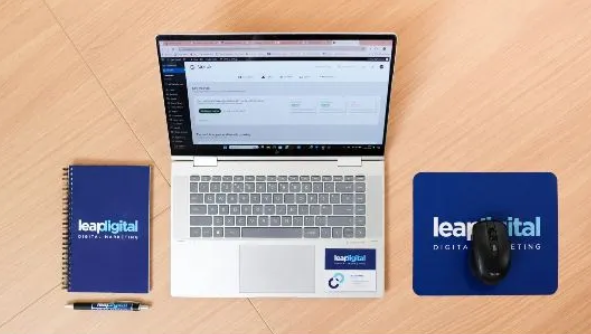In today’s world, taking care of the environment is more important than ever. Businesses, governments, and even schools are working hard to protect natural resources and reduce pollution. But how do they know if they are doing enough? This is where a sustainability assessment tool comes into play.
A sustainability assessment tool helps people and organizations measure how eco-friendly, socially responsible, and economically sound their actions are. It’s like a report card for the environment and society!
Why Is Sustainability Important?
Before diving deeper, let’s understand what sustainability means. Sustainability is about meeting our needs today without harming the ability of future generations to meet their own needs. It focuses on three main areas:
-
Environmental: Protecting nature and using resources wisely.
-
Social: Treating people fairly and supporting communities.
-
Economic: Managing money in a way that supports long-term growth.
When these three areas are balanced, we create a better world for ourselves and future generations.
What Does a Sustainability Assessment Tool Do?
A sustainability assessment tool checks how well a project, product, or organization supports sustainability. It gathers data and gives scores or ratings that show what’s working well and what needs improvement. These tools can be used in different fields like:
-
Construction and architecture
-
Agriculture
-
Energy production
-
Manufacturing
-
Education
By using a sustainability assessment tool, decision-makers can plan better and reduce their negative impact on the planet.
Key Features of Sustainability Assessment Tools
Here are some common features you’ll find in these tools:
1. Data Collection
They collect information about energy use, waste production, water usage, and more.
2. Indicators and Metrics
These are specific values or signs used to measure sustainability. For example:
-
Carbon footprint
-
Water consumption
-
Waste generation
-
Employment rates
-
Community involvement
3. Scoring System
Tools usually provide scores or ratings to show performance. This could be in numbers, percentages, stars, or colors (like green for good and red for bad).
4. Recommendations
Many tools offer suggestions on how to improve sustainability. For example, using renewable energy or recycling more.
Popular Sustainability Assessment Tools
There are many sustainability assessment tools used around the world. Here are a few examples:
1. LEED (Leadership in Energy and Environmental Design)
Used mostly in buildings, LEED checks energy use, water efficiency, air quality, and more. It’s a well-known tool in green building.
2. BREEAM (Building Research Establishment Environmental Assessment Method)
This tool is popular in Europe and works similarly to LEED.
3. SAFA (Sustainability Assessment of Food and Agriculture systems)
Created by the Food and Agriculture Organization (FAO), this tool checks sustainability in farming and food systems.
4. GRI (Global Reporting Initiative)
GRI helps companies report their sustainability efforts in a clear and consistent way.
These tools help people make smart choices that are good for the planet and its people.
Who Uses Sustainability Assessment Tools?
You might be surprised to know how many people and organizations use these tools:
-
Governments: To create eco-friendly policies and projects.
-
Businesses: To improve operations and reduce waste.
-
NGOs (Non-Governmental Organizations): To monitor and support community programs.
-
Students and Researchers: To study environmental and social issues.
Even schools can use simple versions of these tools to teach students about sustainability.
Benefits of Using a Sustainability Assessment Tool
Using these tools brings many advantages, such as:
✅ Better Decision-Making
With clear data and scores, people can make smart choices for the environment.
✅ Cost Savings
Reducing energy and waste can save a lot of money in the long run.
✅ Public Trust
Companies that care about sustainability often gain more trust and support from customers.
✅ Regulatory Compliance
Many countries have laws that require sustainable practices. These tools help follow those rules.
✅ Continuous Improvement
Sustainability is a journey, not a one-time task. Tools help track progress over time.
Challenges in Using Sustainability Assessment Tools
While these tools are helpful, they also come with challenges:
-
Data Collection Can Be Hard: Sometimes, it’s difficult to gather all the needed information.
-
Not All Tools Are Equal: Some tools may be better for certain industries than others.
-
Costs and Time: Some tools are expensive or take a lot of time to use.
Still, the benefits often outweigh the difficulties, especially for organizations serious about protecting the environment.
A Simple Example for Students
Imagine your school wants to become more eco-friendly. You could use a simple sustainability assessment tool to:
-
Check how much electricity the school uses each month.
-
Count how many plastic bottles are thrown away.
-
See if students and staff are recycling.
-
Measure water usage in bathrooms and canteens.
Based on the results, the school can make changes—like turning off lights when not in use or starting a recycling program.
Conclusion: A Tool for a Better Tomorrow
A sustainability assessment tool is more than just a checklist—it’s a powerful way to help the world become a better place. Whether it’s used in buildings, farms, businesses, or schools, this tool shows where we stand and where we can improve.
By learning about and using sustainability assessment tools, even young students like you can make a real difference. After all, protecting the Earth starts with small steps—and the right tools make those steps easier to take.









